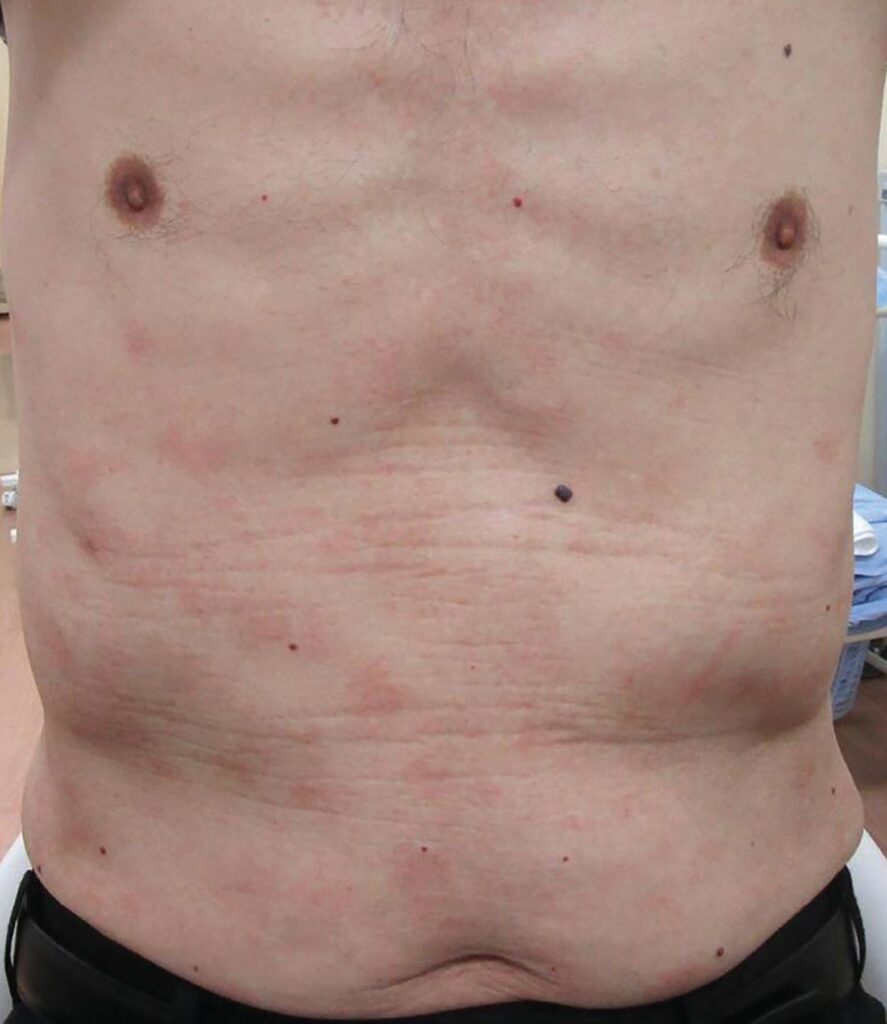Infective Endocarditis Presenting with Truncal Rash and Conjunctival Petechiae: A Case Study Highlighting Diagnostic Challenges and Multisystemic Implications


In a complex medical case, a 75-year-old man presented with persistent nocturnal fevers and a distinctive truncal rash, eventually diagnosed as infective endocarditis. This case underscores the diagnostic challenges in correlating common symptoms with rare etiologies. It highlights the importance of comprehensive evaluation in geriatric patients with non-specific symptoms like fever and rash, and the potential for common conditions like benign prostatic hypertrophy and poor oral hygiene to contribute to severe systemic infections.
Key Points:
- Patient Presentation: A 75-year-old man with a history of atrial fibrillation and hyperlipidemia presented with intermittent nocturnal fevers and truncal rashes.
- Initial Symptom Management: Symptoms were temporarily alleviated with clarithromycin and acetaminophen but recurred, indicating a resistant underlying condition.
- Rash Characteristics: Thumbprint-sized truncal rashes with pale-pink margins, persistent throughout the patient’s febrile and afebrile periods.
- Physical Examination Findings: Notable for petechial hemorrhage in the right palpebral conjunctiva and erythematous macules on the abdomen to lower back.
- Laboratory Results: Elevated levels of brain natriuretic peptide, ferritin, erythrocyte sedimentation rate, and C-reactive protein; mild proteinuria and microscopic hematuria observed.
- Negative Tests: Rheumatoid factor, antinuclear antibodies, and antineutrophil cytoplasmic antibodies.
- Blood Culture Findings: Positive for Streptococcus mitis, an oral bacterium, indicative of an oral source of infection.
- Echocardiography Result: Revealed vegetations on the aortic valve, diagnosing left-sided infective endocarditis.
- MRI Findings: Identification of mycotic aneurysms and cerebral microhemorrhages, complicating the endocarditis.
- Treatment and Outcome: Successful treatment with intravenous penicillin G and dental extractions, resolving the rashes and petechial hemorrhage.

Infective endocarditis (IE) is an uncommon but potentially devastating disease, with an estimated annual incidence ranging from 2 to 7.9 per 100,000 individuals per year and a short-term mortality of 10% to 30%.
More in Geriatrics
